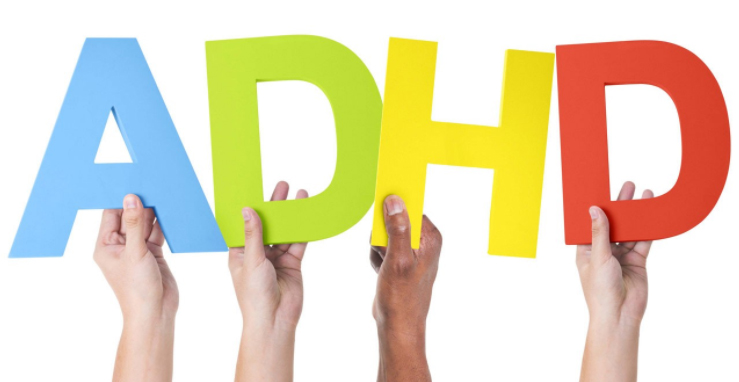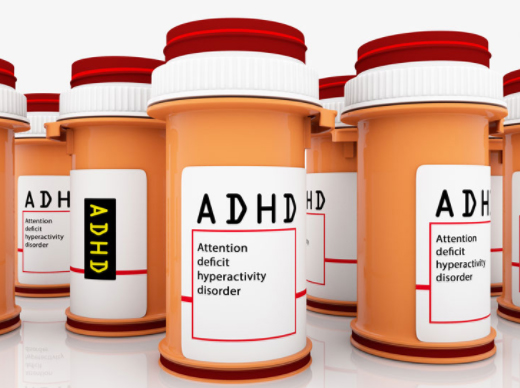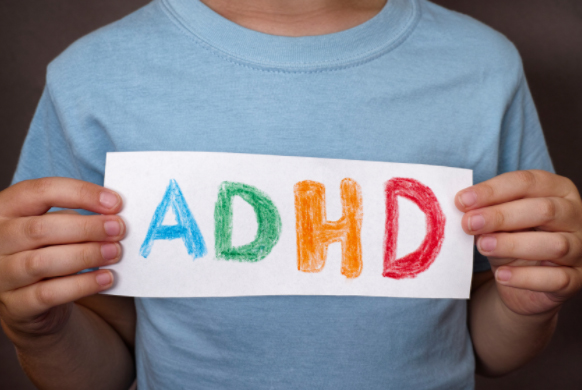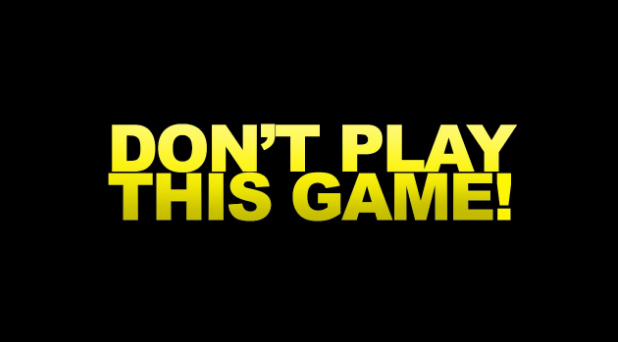
This will guide you to understand more about the Nonstimulant Therapy Side effects and specifications . It is a must know for ADHD patients to know everything about Nonstimulant Therapy .
Nonstimulant Therapy Side effects and specifications
Have you heard something like ADHD , then i am sure you would have also heard about Nonstimulant Therapy . But you may not be having a clarity about this so here we will focus to explain Nonstimulant Therapy Side effects and specifications.
Antidepressants !! Heard of these as the only way to help those suffering from certain conditions? Here is more about them.
The Stimulant medications are the first choice of doctors for treating Attention Deficit Hyperactivity Disorder (ADHD). in adults and children. Doctors preferred stimulant medication at first glance but now to avoid more side effects on treatment the preference is for ADHD specific non stimulants, blood pressure medications and Antidepressants. Non stimulant therapy is so far used to treat ADHD as an approved drug from FDA.
What is ADHD ?
ADHD – Attention Deficit Hyperactivity Disorder is a mental illness caused in children and teens which can continue to adulthood if untreated. Symptoms include uncontrolled impulses and unable to concentrate which leads to behavioral changes in school and social life. This disorder is usually diagnosed in the early years of schooling when the child is unable to pay attention. If this is continuing even after becoming an adult, then those kind of people has lot of issues in management. Relationships and self esteem are also affected. 
Symptoms of ADHD
ADHD Symptoms in Children can be divided into three categories as below
- Inattention:
- Gets distracted easily.
- Unable to follow instructions and leaves tasks unfinished.
- Unable to listen.
- Cannot concentrate and hence makes silly mistakes.
- Routine activities are forgotten.
- Will be unable to organise everyday tasks.
- Doesn’t like to do be stationed for any task.
- Loses belongings/things.
- Appears to be day dreaming.
Read Also : Reduce Stress in Busy lifestyle with this Excellent Lifestyle Hacks
2. Hyperactivity:
- While sitting, the child will squirm, fidgets or bounces.
- Cannot stay stationed/seated for longer time.
- Cannot play quietly.
- Is restless – always runs, moves around or climbs on something or the other.
- Very talkative.
- Is always in motion as if the child is driven by a motor.
Read Also : Reduce stress & anxiety with these amazing essential oils
3. Impulsivity:
- Cannot wait for his/her turn.
- Shouts out answers whether correct or not.
- Intervenes into others’ tasks.
ADHD Symptoms in Adults has the below signs and symptoms.
As a person gets older / into adulthood, ADHD symptoms change which include:
- Chronic lateness and forgetfulness
- Anxiety
- Low self-esteem
- Problems at work
- Trouble controlling anger
- Impulsiveness
- Substance abuse or addiction
- Unorganized
- Procrastination
- Easily frustrated
- Chronic boredom
- Trouble concentrating when reading
- Mood swings
- Depression
- Relationship problems
These are the common symptoms of ADHD and in the few are very lesser known symptoms of ADHD.
Nonstimulant Therapy
Nonstimulant Therapy is a form of medicine for ADHD candidates who do not show any significant relief from their symptoms after treating them with relevant medicines or those who exhibit side effects or cannot tolerate effective doses of the medicines. It is used in treating children and teens diagnosed with ADHD, other co-existing medical conditions such as tic disorder. Tic disorder is an involuntary movement disorder which may or may not be seen in ADHA children.
This therapy uses pharmacological approach in dealing with ADHD. The commonly recommended medications for ADHD in non stimulant therapy are Atomoxetine, Clonidine, Guanfacine, and Bupropion. FDA has approved the first three drugs in non stimulant therapy and is second line drugs. Bupropion is not accepted by FDA. There are several studies supporting its use in ADHD, and is considered as third line drug.
ADHD Specific Nonstimulants
These are the medicines specifically created to treat ADHD :
The non stimulants which are used to treat ADHD and many disorders are Atomoxetine (Strattera) Clonidine ER (Kapvay) and Guanfacine ER (Intuniv) etc., which are FDA approved.
-
Atomoxetine (Strattera)
Atomoxetine (Strattera)was the first FDA approved nonstimulant drug to treat ADHD. It is now used to treat both children and adults. This drug helps in boosting the presence of norephinephrine which is considered as an important chemical for the brain function. It helps ADHD patients to improve attention span and reduces impulsive behaviour associated with hyperactivity.
-
Clonidine ER (Kapvay) Guanfacine ER (Intuniv)
These are approved for ADHD in children ages 6 to 17 and also prescribes to adults. These have effect on certain receptors in the brain, which lowers distraction and improve attention and on working of memory and impulse control. The active ingredient of Intuniv is tenex.
Tenex is used primarily in the treatment of hypertension. This drug is also used in ADHD .
Another drug Kapvay which is used in ADHD has clonidine as active ingredient and is also used in controlling blood pressure by significantly reducing heart rate and blood pressure.
Read Also : TMJ Headache Must be Treated – Symptoms & treatments
Advantages of Nonstimulant Therapy
The nonstimulants have advantages over many stimulants used to treat ADHD viz.,below is the pros of Nonstimulants or advantages of nonstimulant therapy to treat ADHD.
- They don’t cause agitation, sleeplessness or lack of appetite.
- They are neither pose the same risk of abuse nor addictives.
- The added benefit of these non stimulants is the action sets in immediately after administration and wears off abruptly.
These advantages of Nonstimulant therapy makes it as one of the preferred kind of ADHD treatments all over .
Side effects of Nonstimulant Therapy
The non stimulant therapy is very effective in treating ADHD. They do have side effects like the stimulant medicines. These drugs take a few days before the body starts adjusting to it. These side effects can be seen when the child is taking medicines or even after the drug concentration weans off. The range of side effects of Nonstimulant Therapy experienced by the child varies from mild to severe effects which may be disturbing to the child.
The stimulant medications like Ritalin, Focalin, Vyvanse are effective in ADHD with a battery of side effects like tics, sleep related problems, weight loss due to decreased appetite, increased blood pressure, nervousness, anxiety, irritability and stomach related issues.
The non stimulant therapy using Strattera, Tenex, Intuniv, and Kapvay has proven benefits in ADHD. As every drug is known to have adverse effects so are these group of drugs. Nausea, weight loss due to associated decrease in appetite, easy fatigability, and drowsiness coupled with mood swings are commonly encountered with non stimulant therapy.
Sleeping problems due to Nonstimulant Therapy
Children with ADHD have a difficult time in falling asleep. To add to the problem, the Nonstimulant Therapy boosts the norepinephrine levels in the brain and increases the attention span and concentration, making it difficult for some children to fall asleep. It takes time for the child to get adjusted and may take as long as 4 to 6 weeks.
Eating problems due to Nonstimulant Therapy
The cons of Nonstimulant Therapy is that it causes severe eating problems in children which leads to significant weight loss in these children. The effect of the treatment sets in after 4 hours. If the child takes the tablet after a meal, the child would be feeling full. So the child will avoid next meal. Eating small quantities in short interval span should be encouraged to avoid weight loss during Nonstimulant Therapy .
Nausea and headache due to Nonstimulant Therapy
This is the most disturbing side effect in a child on non stimulant therapy. Over a long term it is known to change the child’s psychology and personality. There is a close relation between ADHD and depression. Hence it is very necessary to identify it early and describe it to the physician regarding how it happens and the intensity of it.
Anxiety due to Nonstimulant Therapy
ADHD makes a child anxious. This along with the non stimulant therapy can worsen the situation. It is necessary to taper the dose of the therapy or to change the drug to make the child feel better.
It is essential to bring these side effects to the notice of the treating physician.
The non stimulants are also have some potential side effects of their own on individuals.
Read Also : PTSD symptoms – How serious is Post Traumatic Stress Disorder
Atomoxetine (Strattera) Detailed to Know More
The drug Atomoxetine, bearing the brand name Strattera is approved by the FDA. It is a non stimulant second line treatment for ADHD. It is not a substance of abuse. It acts by selectively inhibiting the re-uptake of norepinephrine. Norepinephrine is an important chemical in the brain. This drug selectively boosts its content in the brain.
The action is long lasting. Atomoxetine takes about 6 weeks to reach its therapeutic level of effectiveness. It is found to be useful in lessening the impulsive behavior and increases the attention and concentration span. Thus it is effective in children with hyperactivity.
Recent guidelines in the management of ADHD have placed Atomoxetine as first line drug in the treatment of ADHD. This wonder drug has to its credit of being the first non stimulant drug to be included in the first line of management of ADHD.
Atomoxetine has brought relief to those parents who are worried about the drug being used for substance abuse.
Read Also : Obstructive sleep apnea treatments ,therapies that really works
Common Side effects of Atomoxetine (Strattera)
The most common side effects of Atomoxetine (Strattera) are as follows:-
- Fatigue
- Mood Swings
- Upset Stomach
- Less appetite which leads to weigh loss.
- Nausea
- Dizziness
Other than these common side effects strattera has some less common side effects like.,
- Jaundice and liver problems – It is important to contact doctor if an individual develop yellowing of the skin or whites of the eyes.
- Sucidal thinking – There is a possiblity in slight increase of the risk of suicidal thinking in teenagers.
- Slowed Growth in children – It is important to keep the track on the height and weight of the child.
- Priapism or erections that last more than 4 hours.
- Serious allergic reactions. Rarely few people may develop rashes, hives or swelling.

Common side effects of Clonidine ER (Kapvay)
Here is the side effects of Clonidine ER(Kapvay)
- sleepiness and tiredness.
- upper respiratory infections such as
- cough
- runny nose
- sneezing
- irritability
- sore throat
- insomnia
Common Side Effects of Guanfacine ER (Intuniv)
The Common side effects of Guanfacine ER (Intuniv) are given as follows –
- Headache
- Fatigue
- Dizziness, sleepiness and sedation.
Rare and serious side effects include
- low blood pressure
- heart rhythm changes
Read Also : Amazing Fitness Apps To Track Calories & Keep You Motivated
Tips and Precautions for Nonstimulant Therapy
If an individual has been presecribed a nonstimulant for ADHD, then here is the Tips and Precautions for Nonstimulant Therapy .
- It is important to consult doctor before taking non stimulants by explaining the medical history as the non stimulants can cause side effects.
- It advised not to take strattera to an individual diagnosed with narrow glaucoma as it can lead to blindness.
- If the person has an allergy to any of the non stimulants should avoid taking these medications instead they can take antidepressant by talking to the doctor.
- An individual having jaundice or liver problems should avoid the non stimulant medication.
- If an individual is pregnant or plan to become pregnant it is important to consult doctor as these drugs have possibility of affecting the growing foetus. Therefore, these are to be avoided or stopped before conceiving.
- Have any medical problems like blood pressure, seizures, heart etc., consult doctor.
- Have a history of drug or alcohol abuse or dependency talk to the doctor.
- Become agitated or irritable or have suicidal thoughts consult doctor.
Non Stimulant therapy is approved by FDA for treatment of ADHD in both adults and children. The side effects are very less and are active only in sensitive patients. It is known to be harmless for patients who consume a balanced and nutritious diet.














0 comments